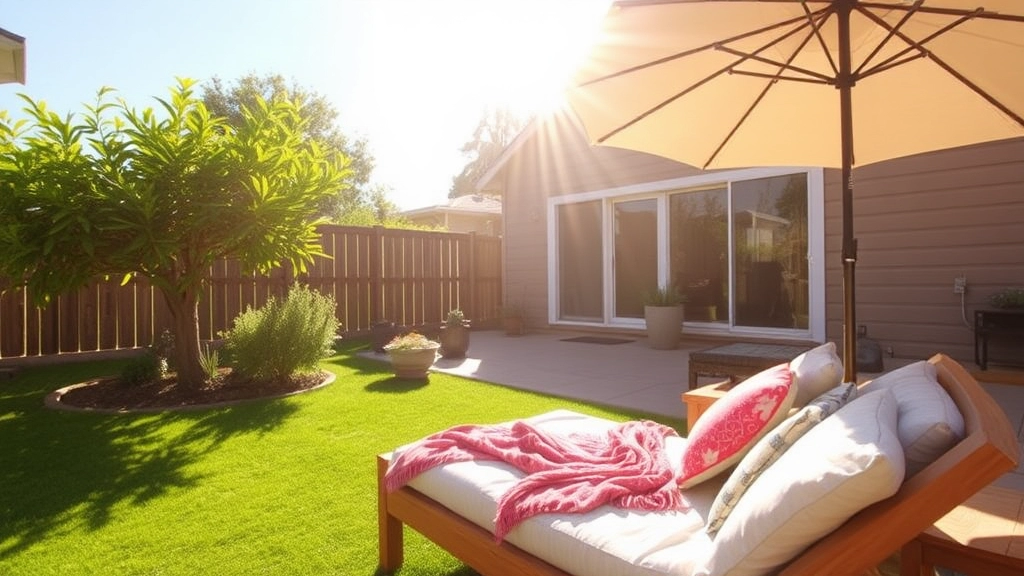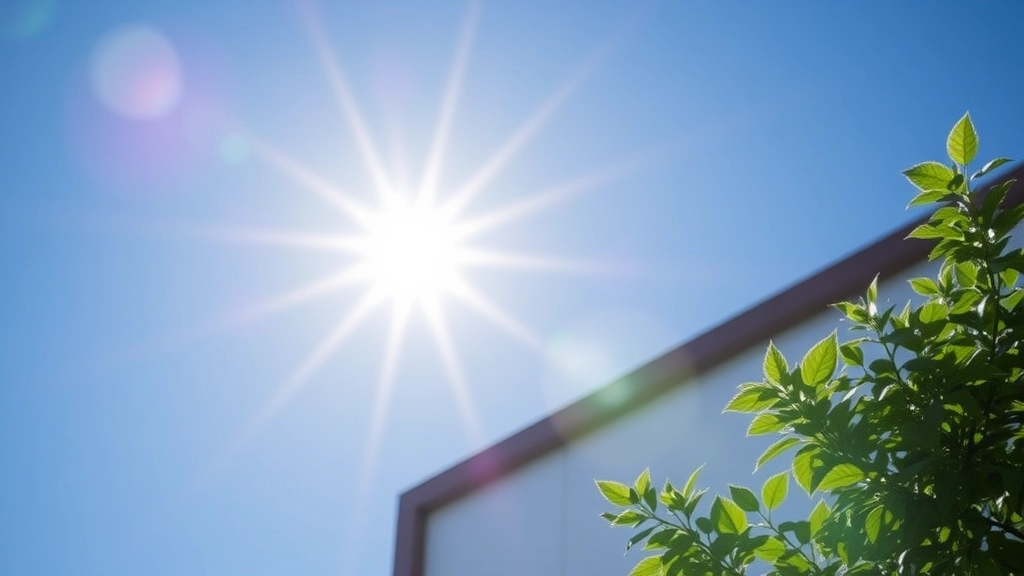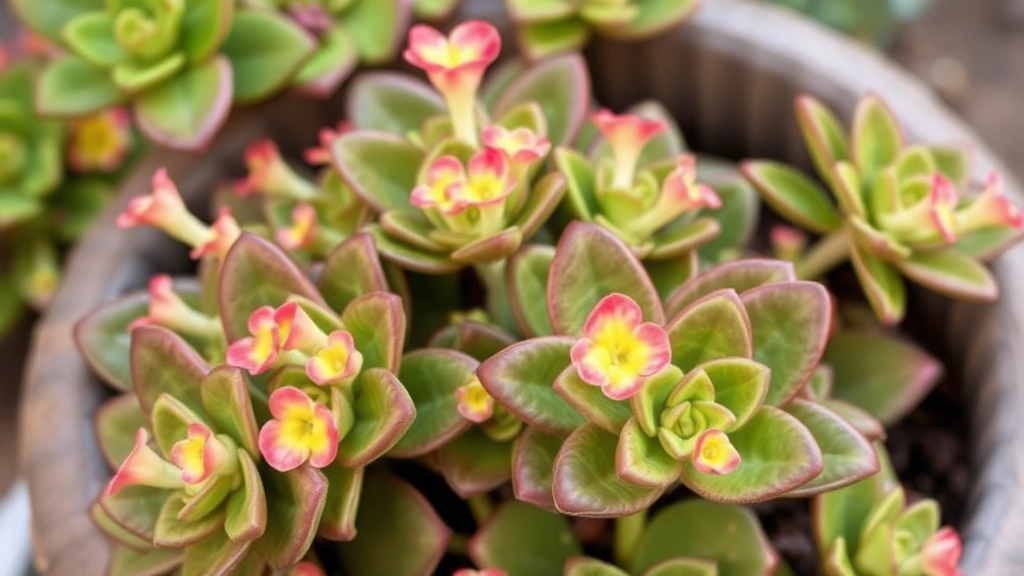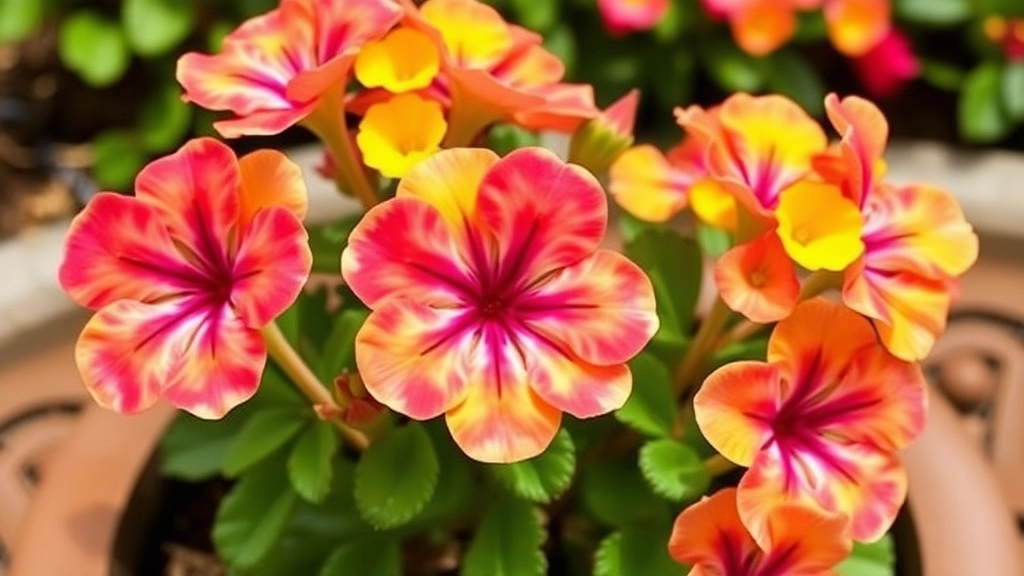How to Care for a Kalanchoe in Full Sun
If you’re wondering how to care for a Kalanchoe in full sun, you’ve come to the right place. I’m here to share some straightforward tips to help your plant thrive. Kalanchoes are known for their vibrant blooms and easy care, but they do have specific needs when it comes to sunlight. Let’s dive into the essentials.
Essential Tips for Kalanchoe Care
- Acclimate Gradually: Kalanchoes love bright, direct sunlight, but it’s crucial to acclimate them gradually to avoid sunburn. Start by placing your plant in a spot with indirect light and slowly move it to a sunnier location over a week.
- Well-Draining Soil: Ensure your Kalanchoe is in well-draining soil to prevent root rot.
- Water Sparingly: Water sparingly, letting the soil dry out between waterings.
By following these steps, your Kalanchoe will flourish in full sun.
Optimal Sunlight Conditions for Kalanchoe
Have you ever wondered what the perfect sunlight conditions are for your Kalanchoe?
These vibrant succulents thrive in bright, indirect light but can also handle full sun exposure.
- Bright Indirect Light: Ideal for most Kalanchoe varieties, as it mimics their natural habitat.
- Full Sun: Some types can tolerate up to six hours of direct sunlight daily.
- Avoid Low Light: Insufficient light can lead to leggy growth and fewer blooms.
Understanding these preferences can significantly impact your plant’s health and vibrancy.
Kalanchoe is particularly sensitive to its environment, so monitoring sunlight exposure is crucial.
As we delve deeper, let’s explore the benefits of giving your Kalanchoe full sun exposure.
For more detailed care tips, you might find our guide on how to care for Kalanchoe succulent very useful. Additionally, if you’re dealing with an overgrown plant, check out our tips on fixing overgrown, leggy Kalanchoe.
Benefits of Full Sun Exposure

So, you’re wondering why full sun exposure is often touted as the best for Kalanchoe?
Well, let’s dive into the perks of giving your plant those sun-soaked moments.
Boosted Growth
First off, Kalanchoe thrives in bright light.
When you provide full sun, you’re not just giving it a warm hug; you’re encouraging vibrant growth.
- Lush Foliage: With the right amount of sunlight, you’ll notice leaves getting fuller and greener.
- More Blooms: If you want those stunning flowers, full sun is key. More light often translates to more blooms.
Enhanced Resilience
Kalanchoe plants are tough cookies, but they need that sun to build their resilience.
- Disease Resistance: A well-lit plant is less prone to pests and diseases.
- Stronger Stems: Sunlight helps in developing sturdy stems that can support those beautiful blossoms.
Improved Photosynthesis
Here’s the science bit—don’t worry, I’ll keep it simple!
- Energy Production: Sunlight fuels photosynthesis, which is how your Kalanchoe makes food.
- Healthier Plant: More energy means a healthier plant overall.
Vibrant Colouration
Ever noticed how some Kalanchoe plants have that stunning reddish hue?
That’s no accident!
- Sun Exposure: Full sun can enhance the natural colours of the leaves and flowers, making them pop even more.
Encouragement of Natural Growth Cycle
Plants have their own rhythm, and sunlight plays a big role.
- Blooming Cycle: Full sun exposure can help regulate the blooming cycle, ensuring your plant knows when it’s time to shine.
While Kalanchoe thrives in bright, sunny conditions, it’s essential to recognize the potential risks associated with excessive sunlight exposure.
Are you noticing your Kalanchoe’s leaves turning brown or crispy? This could be a sign that your plant is receiving too much sunlight.
**Here are some common risks of overexposure:**
– **Leaf Scorch:** This is when the leaves develop burnt patches, often appearing brown and crispy at the edges. It’s a clear indicator that your plant is struggling.
– **Wilting:** Surprisingly, too much sun can lead to wilting. The plant may lose moisture faster than it can absorb it, causing stress.
– **Faded Colour:** Healthy Kalanchoe has vibrant foliage. If you notice a dull or washed-out appearance, it could be a sign of sun damage.
– **Stunted Growth:** Excessive sunlight can hinder the plant’s growth, making it less robust and vibrant.
To mitigate these risks, it’s crucial to monitor your plant’s condition closely. If you suspect your Kalanchoe is getting too much sun, consider adjusting its position or providing some shade during peak hours. For more detailed information on why your Kalanchoe leaves might be turning brown, you can read our guide on [why are my Kalanchoe leaves turning brown](https://planthq.org/why-are-my-kalanchoe-leaves-turning-brown/). Additionally, if you’re looking to explore different species that might be more resilient, check out our article on [explore different Kalanchoe species for your garden](https://planthq.org/explore-different-kalanchoe-species-for-your-garden/).
Best Practices for Sunlight Management

When caring for your Kalanchoe, managing sunlight exposure is crucial for its health and vibrancy. You may be wondering how to strike the perfect balance between providing enough light and avoiding sun damage. Here are some best practices to ensure your Kalanchoe thrives:
- Choose the Right Location: Place your Kalanchoe in a spot that receives bright, indirect sunlight. A south-facing window is often ideal, but be mindful of direct afternoon sun.
- Rotate Your Plant: To ensure even growth, rotate your Kalanchoe every few weeks. This helps all sides receive equal sunlight and prevents it from leaning towards the light source.
- Use Sheer Curtains: If your Kalanchoe is in a location with intense sunlight, consider using sheer curtains. This diffuses the light, providing a softer exposure that can be beneficial.
- Monitor Seasonal Changes: As seasons change, so do light conditions. In winter, your Kalanchoe might not receive as much natural light. Be prepared to move it to a brighter spot or supplement with grow lights.
- Adjust Watering Practices: Sunlight affects how quickly your Kalanchoe uses water. In brighter conditions, it may need more frequent watering, while in lower light, reduce watering to prevent root rot.
- Observe Growth Patterns: Keep an eye on your plant’s growth. If it’s stretching towards the light, it may need more exposure. Conversely, if you notice leaf scorching, it may be getting too much sun.
Seasonal Sunlight Considerations
As we delve into the seasonal aspects of sunlight for Kalanchoe, it’s essential to understand how changing conditions can affect your plant’s health and growth.
Spring and Summer
During the spring and summer months, Kalanchoe thrives in full sun.
- Optimal Exposure: Aim for 6 to 8 hours of direct sunlight daily.
- Benefits: This exposure promotes vibrant blooms and lush foliage.
However, be mindful of the intensity of the sun.
- Adjustments: If temperatures soar, consider providing some afternoon shade to prevent leaf scorch.
Autumn and Winter
As the seasons shift to autumn and winter, sunlight availability decreases.
- Reduced Light: Days are shorter, and the sun’s angle changes, leading to less direct light.
- Adjusting Care: During this period, you may need to reposition your Kalanchoe closer to windows or under grow lights to ensure it receives adequate sunlight.
General Tips for Seasonal Management
- Monitor Light Levels: Regularly check how much light your plant is receiving.
- Rotate Your Plant: This helps all sides get equal exposure and encourages even growth.
For more detailed care instructions, check out our expert tips on Kalanchoe care and learn about the optimal conditions for Kalanchoe temperature tolerance.
Signs of Sun Stress in Kalanchoe

So, you’ve got your Kalanchoe basking in the sun, but how do you know if it’s getting too much?
Here are some signs of sun stress to watch out for:
- Leaf Discoloration: If you notice yellowing or browning on the edges of the leaves, your plant might be screaming for a break from the sun.
- Leaf Curling: Leaves curling inwards can indicate that your Kalanchoe is trying to protect itself from excessive heat.
- Faded Colours: A vibrant Kalanchoe should have rich hues. If the colours start to look washed out, it’s a sign it’s getting too much sun.
- Wilting: If the plant looks droopy despite regular watering, it might be struggling to cope with the intense rays.
- Burnt Tips: Crispy, brown leaf tips are a clear indicator that your plant has been overexposed to sunlight.
Keep an eye on these signs, as they can help you adjust your plant’s environment before it suffers too much.
Adjusting Sunlight for Indoor Kalanchoe
When it comes to caring for indoor Kalanchoe, managing sunlight exposure is crucial. Many plant enthusiasts often wonder how to provide the right amount of light without overwhelming their plants.
Understanding Indoor Light Needs
Kalanchoe thrives in bright, indirect sunlight. Here’s how to adjust sunlight for optimal growth:
- Choose the Right Location:
- Place your Kalanchoe near a south or west-facing window.
- Ensure it receives at least 6 hours of light daily.
- Monitor Light Intensity:
- If the sunlight is too harsh, consider using sheer curtains to diffuse the light.
- Rotate the plant every couple of weeks to ensure even exposure.
- Supplement with Grow Lights:
- If natural light is limited, invest in full-spectrum LED grow lights.
- Position them about 12-18 inches above the plant for best results.
- Seasonal Adjustments:
- As seasons change, so does the intensity and duration of sunlight.
- Be prepared to move your Kalanchoe closer to or further from windows as necessary.
Signs of Underexposure or Overexposure
Keep an eye on your Kalanchoe for signs of stress. Yellowing leaves may indicate too much light, while leggy growth could suggest insufficient sunlight. Adjust accordingly to maintain a healthy plant. For more detailed tips, check out our essential tips for healthy growth and our guide on how to grow and care for succulent Kalanchoe Tomentosa.
FAQs About Kalanchoe and Full Sun Exposure
Why is full sun exposure beneficial for Kalanchoe plants?
Full sun exposure is beneficial for Kalanchoe plants because it promotes vibrant growth, enhances resilience, improves photosynthesis, and boosts the plant’s natural color and blooming cycle.
How does full sun exposure affect the growth of Kalanchoe?
Full sun exposure encourages lush foliage and more blooms, leading to a healthier and more attractive plant.
Can Kalanchoe plants become more resilient with full sun exposure?
Yes, full sun exposure helps Kalanchoe plants build resilience by enhancing disease resistance and developing stronger stems.
What role does sunlight play in the photosynthesis process of Kalanchoe?
Sunlight fuels photosynthesis, which is how Kalanchoe plants produce energy and food, resulting in a healthier plant overall.
How does full sun exposure affect the coloration of Kalanchoe leaves and flowers?
Full sun exposure can enhance the natural colors of Kalanchoe leaves and flowers, making them more vibrant and visually appealing.
What are the best practices for managing sunlight exposure for Kalanchoe?
Some best practices include choosing the right location with bright, indirect sunlight, rotating the plant, using sheer curtains to diffuse intense light, monitoring seasonal changes, adjusting watering practices, and observing growth patterns.
What are the signs of sun stress in Kalanchoe plants?
Signs of sun stress include leaf discoloration (yellowing or browning), leaf curling, faded colors, wilting, and burnt tips. These indicators suggest that the plant may be receiving too much sun and needs environmental adjustments.
How can I prevent my Kalanchoe from getting sun stress?
To prevent sun stress, ensure your Kalanchoe receives bright but indirect sunlight, use sheer curtains to diffuse intense rays, rotate the plant for even light exposure, and monitor for any signs of stress to make timely adjustments.
How often should I rotate my Kalanchoe plant?
It’s recommended to rotate your Kalanchoe every few weeks to ensure all sides receive equal sunlight, promoting even growth and preventing the plant from leaning towards the light source.
What should I do if my Kalanchoe shows signs of sun stress?
If your Kalanchoe shows signs of sun stress, such as leaf discoloration or wilting, move it to a location with less intense light, use sheer curtains to diffuse the sunlight, and adjust your watering practices accordingly.
References
-
Kalanchoe Light Requirements
-
Growing Kalanchoe Indoors
-
The Old Farmer’s Almanac: Kalanchoe
